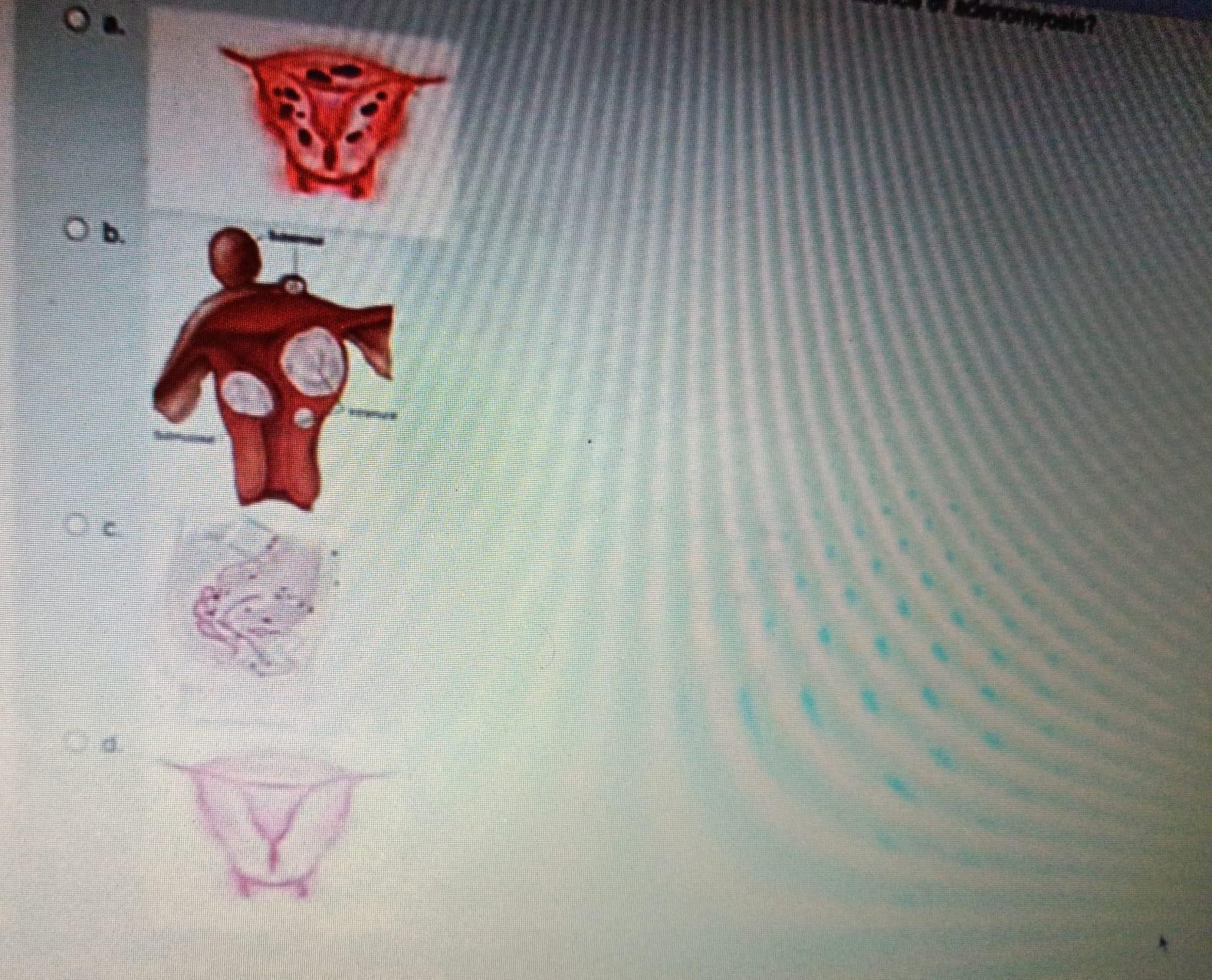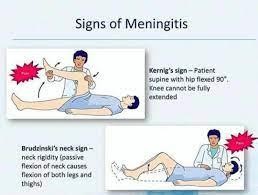Which of the following imagine the nurse will recognize as a positive evidence of adenomyosis?

A
B
C
D
The Correct Answer is A
Choice A rationale: this is the correct answer since the darkened spots in the uterus represent endometrial-like tissue growths within the muscular wall of the uterus (the myometrium).
Choice B rationale: This picture shows leiomyomas, also known as fibroids, which are benign tumors that develop from the smooth muscle cells of the uterus. They can vary in size, number, and location within or outside the uterus. They can cause symptoms such as heavy bleeding, pelvic pressure, pain, and infertility.
Choice C rationale: This is endometriosis which is a condition where tissue similar to the endometrium (the lining of the uterus) grows outside the uterus, such as on the ovaries, fallopian tubes, pelvic wall, or bowel. This tissue responds to hormonal changes and bleeds during the menstrual cycle, causing inflammation, pain, and sometimes infertility.
Choice D rationale: This image shows a normal uterus.
Nursing Test Bank
Naxlex Comprehensive Predictor Exams
Related Questions
Correct Answer is B
Explanation
Choice A rationale: This is a positive Trousseau's sign, which indicates hypocalcemia or tetany. It is not related to meningitis or meningeal irritation.
Choice B rationale: Kernig's sign is indicated when there is resistance and pain with knee extension and hip flexion, suggesting meningeal irritation.
Choice C rationale: This is a positive Homan's sign, which indicates deep vein thrombosis or phlebitis. It is not related to meningitis or meningeal irritation.
Choice D rationale: This is a sign of nuchal rigidity, which indicates meningeal irritation, but it is not specific to Kernig's sign. Nuchal rigidity can also be caused by other conditions such as cervical arthritis or muscle spasm.

Correct Answer is C
Explanation
Choice A rationale: This statement is correct; it's important to include the final voided urine in the collection.
Choice B rationale: Proper storage at a cool temperature helps maintain the integrity of the collected urine.
Choice C rationale: Avoiding protein intake during the collection can significantly alter the results of the creatinine clearance test. Eating a regular diet is important to maintain accurate test results.
Choice D rationale: Discarding the first void and starting the collection afterward is a common practice in 24-hour urine collections to ensure a complete sample.
Whether you are a student looking to ace your exams or a practicing nurse seeking to enhance your expertise , our nursing education contents will empower you with the confidence and competence to make a difference in the lives of patients and become a respected leader in the healthcare field.
Visit Naxlex, invest in your future and unlock endless possibilities with our unparalleled nursing education contents today
Report Wrong Answer on the Current Question
Do you disagree with the answer? If yes, what is your expected answer? Explain.
Kindly be descriptive with the issue you are facing.
